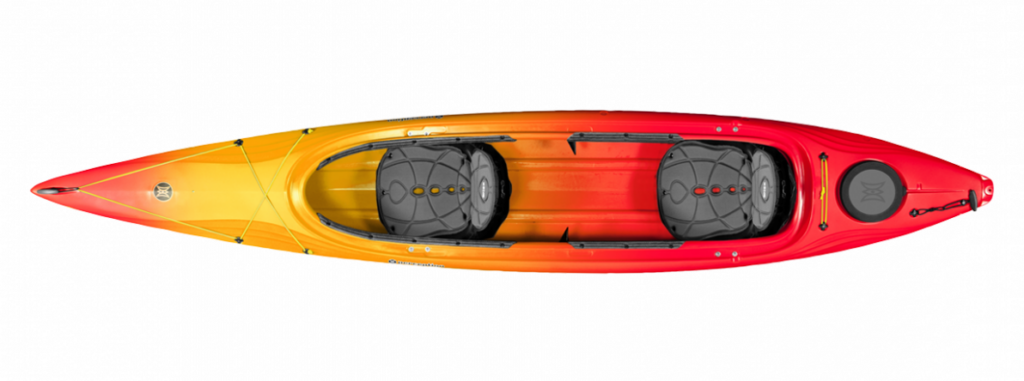Recreational Kayaking (Singe & Tandem)

Single Recreational Kayak
As compared to the whitewater and sea kayak, a recreational kayak length is in the middle. A larger cockpit makes an entry and exit easy, and single recreational has a wider beam of about 27–30” for more stability in water and is generally less than 13 ft in length.
Tandem Recreational Kayak

Our tandem recreational kayaks are 14.5 ft long and have an open cockpit. These kayaks are great for an adult and a kid/child, or 2 smaller adults. Faster than our canoes, these 2 person kayaks are a great option for the family outing.
As compared to the sea kayaks, a recreational kayak is light, and thus it is easier to handle both in and out of water. Our recreational kayaks have weight capacity and limited cargo carrying capacity. Each rec has a compartment in the rear and enough room for a large backpack, or soft sided cooler. We use our recreational kayaks on the entire river with the exception of our D2 whitewater section. Please see sizing chart for kayak selection for check-out.
Sizing chart
Kids and adults up to 185 pounds 10’ Recreational kayak
185-240 pounds 12’ Recreational kayak
240+ pounds – 6’5” and taller 13.5’ Recreational kayak
2 person <460 pounds max. weight Tandem Recreational kayak (2 person)
Kayaking Tips
- Wear your PFD. Roughly 80% of drownings happen due to not wearing the lifejacket.
- Dress for the water temperature and the air temperature at the coldest time of your trip. It may be warm when you start, but it may not stay that way. A cold last hour of the trip is no fun.
- In case you tip!! Know how to empty your kayak just. Get your kayak to the shore, put one end on shore and slowly turn the kayak over so the water exits the cockpit. When there is enough water out, turn completely upside down and rock the existing water out.
- Choose the correct size kayak. If you are petite, tall, round or small, please let us know what kayaks to bring for your group.
- Bring a map or a phone. You can use GoogleMaps or a similar app to “help” with locations along the way. Measure before you go and use the “pins” to locate beginning and end locations. Novice paddlers typically cover about 2 mph on flat water. Experienced paddlers looking for a workout can cover 3-3.5 mph. Anticipate what river current might do to your speed and itinerary.
- Sunscreen!!!! The Sun reflecting off the water will burn in some unlikely places – including under your nose and the back of your ears. A wide brimmed hat with a keeper string or alligator clip, and sunglasses on a keeper cord will keep those expensive glasses where they need to be and add to your sun protection.
- Know how to remove the water in your canoe. Practice getting back in your boat. If you’re paddling with another boat, practice canoe over canoe rescues. If you are paddling solo, the best advice is to paddle close to shore.
- Listen and look!!! Be aware of rapid, obstacles and down trees. Learn to recognize these hazards and portage around them if necessary.
- Water, snacks, picnic, fishing poles, binoculars, extra chocolate. Don’t be the “hangry” paddler. Take your creativity to the water.
- Litter control. Bring a fun tool to collect litter, cans, etc. Makes your trip that much more rewarding. If everyone picked up a couple cans, the whole world would be a better place.


